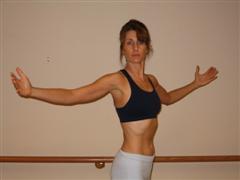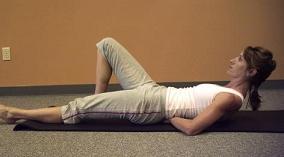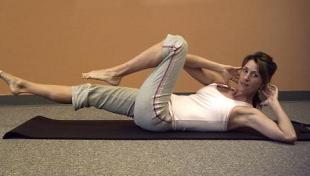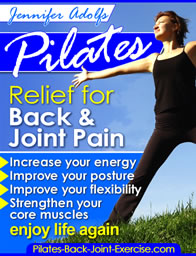Core Pilates: Natural Shapewear!
Goodbye Shapewear, Hello Core Pilates!
Let’s be honest. Did you really shrink those pants in the dryer, or is there another reason that button… just…. won’t quite….close???
Before you dash out and buy some of those undergarments that are now politely called “shapewear,” consider removing that “Do Not Disturb” sign from your abs and commit to shaping and firming this area through the practice of Core Pilates.
Do you want to find your deep abdominal muscles?
Come on, they’re under there somewhere.
First kneel, then press your fingers below your belly and cough.
Did you feel the muscle contract?
That muscle, the transversus abdominis, stabilizes your spine because it’s the deepest of the abdominal muscles; it wraps, sort of like a corset, from the bottom of your rib cage in the front to the ribs in your back and holds the visceral organs in place.
These core muscles stabilize your lumbar spine by narrowing your abdominal wall.
Hmmmm…. Narrower abdominal area…. Already sounds intriguing, right?

Joseph Pilates saw the abdominal area, the area between the bottom rib and the pelvis, as the center, or “Powerhouse” of the body. He perceived this “girdle of strength” as a physical, gravitational center as well as a spiritual and mental one.
Find some of these core exercises for women here.
One of the fundamental principles behind the Pilates method is that this powerhouse is the center of all movement. Moreover, when the abdominal and core muscles are strong they keep the spine properly aligned and support and distribute the stresses place on it.
The abdominal muscles--especially the transversus abdominis—and the deep spinal muscles make up the Core Pilates powerhouse or “girdle of strength.”
Since the purpose of a girdle is to flatten that tummy, it makes sense that when we wake up those deep abdominal muscles by using our girdle of strength, aptly named women’s shapewear, our muscles will respond by pulling in and flattening your abs.
How’s that for some natural shapewear?

Let’s review your other abdominal muscles. You are probably most familiar with your rectus abdominis, the long, superficial muscle that runs from the pubic bone to the bottom of the sternum and lower rib cartilages.
This abdominal muscle bends the body forward and lies close to the surface. If you’ve ever done a “crunch,” you’ve used this muscle.
The Rectus Abdominus muscle is not really functional in supporting the back.
Beneath the rectus abdominis lay the external and internal obliques, which shape your waist and allow you to twist and bend sideways at the waist. If you point your fingers down toward the pelvis, you’ll follow the pattern of the internal oblique muscles. The external oblique muscles, on the other hand, run the opposite way (up) and lay on top of the internal obliques. Picture the letter X.
By strengthening all of your abdominal muscles and your deep spinal muscles with Core Pilates exercises, you will:

- Diminish upper-and lower-back pain
- Shrink your Waistline
- Lengthen your Spine
Skip the real corsets and girdles (excuse me, I meant “shapewear”) and let your abdominal muscles use their power to do all that shaping work for you!
My clients, doing the Core Pilates workouts, have commented on how quickly their powerhouse feels firmer and stronger, and what do you know—now that button fits right into the buttonhole with room to spare.
Leave Core Pilates and get started shaping your body today with the new Pilates ebook.
Recent Articles
-
Pilates after Total Knee Replacement
Apr 23, 20 06:20 PM
It's 2 yrs.post op since I had total knee replacement in both knees. In order for them to last it's recommended that you lift not more than 25 lbs. Pilates -
SI Joint Pain Improved with Pilates!
Aug 11, 17 12:29 AM
Dear Jennifer, I just wanted to reach out and thank you for dramatically improving and changing my life. About a year ago, I woke up in debilitating -
Hip pain after 4 months of Reformer Pilates
Jul 12, 17 06:44 PM
Hi, I had a total right hip replacement 8 months ago; I rehabbed really quickly, although I was also (and still am) dealing with L4 spondylolisthesis.
 | Get Instant Access to Loads of Color Pictures, Postures, and Information Designed to Increase Comfort and Happiness. Learn to Enjoy Life Again! Learn More! |

New! Comments
Have your say about what you just read! Leave me a comment in the box below.